Mattress Buying Guide
Overview

Mattress Size
Mattresses come in 3 major sizes and you should choose one based on your lifestyle, height, width and comfort level.
Length ( In Inches): 72 / 75 / 78




Mattress Material
There are 2 types of mattress layers:

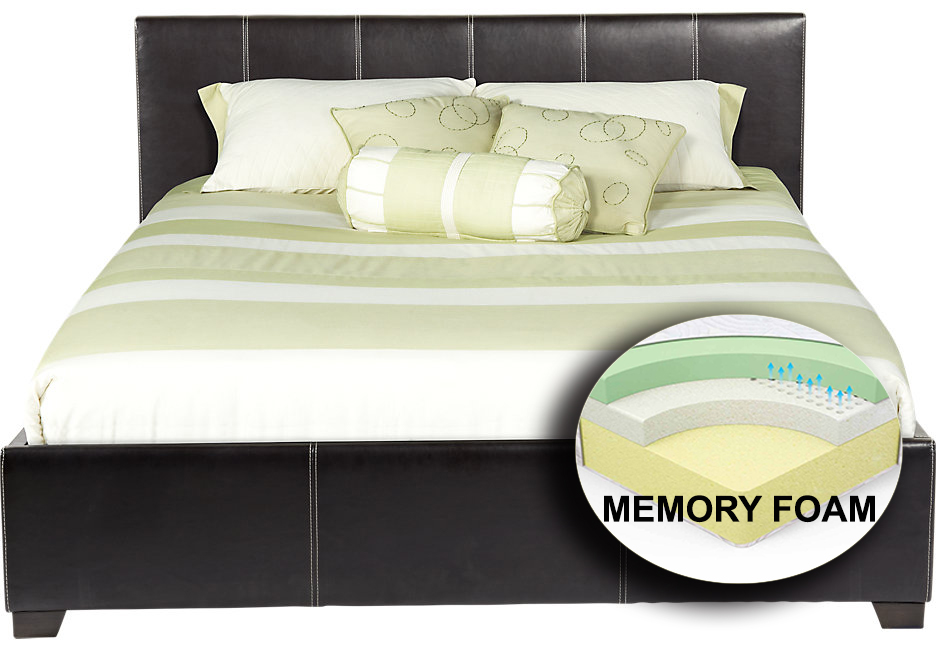
Comfort Layers
PU Foam:
A synthetic, petroleum based foam with performance and price varying according to density and quality. It is widely used and very versatile.
Memory Foam:
Responds to individual shape and pressure. Has good pressure relieving properties. Available in a variety of qualities and densities.
Gel Foam:
A new filling that is taking the bed market by storm. - Can be combined with other materials eg foam. - Ground-breaking technology known for its cooling thermo‑regulating properties. - Delivers benefits such as breathability, pressure relief and body support.
High Resilience (HR) Foam:
High Resiliency (HR) foam is the highest grade of polyurethane foam and weighs 2.5 lbs or more per cubic foot.These foams contour to the body exceptionally well, and their cell structure enables extreme elasticity and optimal supporting force.
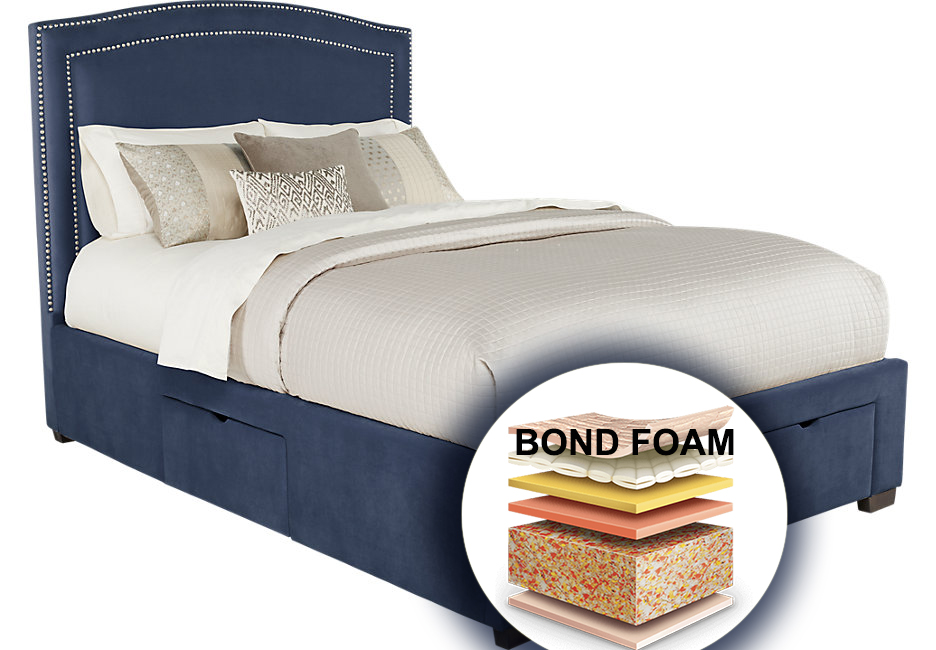

Latex Foam:
A premium quality material, the natural type is derived from the sap of the rubber tree. Has a distinctive, resilient feel, is very durable and has anti-microbial properties that offer benefits to many allergy sufferers.
Support Layers
Bonnell Spring Mattresses:
These interconnected springs uniformly distribute the weight of the body, thereby reducing motion transfer and providing a comfortable surface to sleep on.
- Most common and affordable.
- Maintains its shape and edges with the help of border rods or wire.
- Machine-stitched sides for improved durability.
Pocket Spring Mattresses:
Small, softer springs that work independently from each other.
- Most common and affordable.
- Minimizes motion disturbances while sleeping.
- Conforms and adjusts to body contours.
- Helps eliminate roll together.
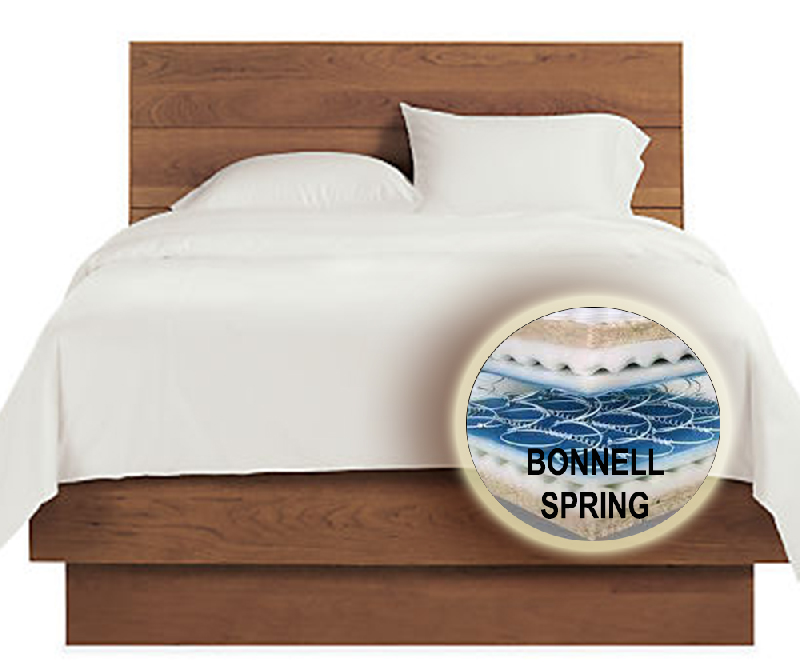
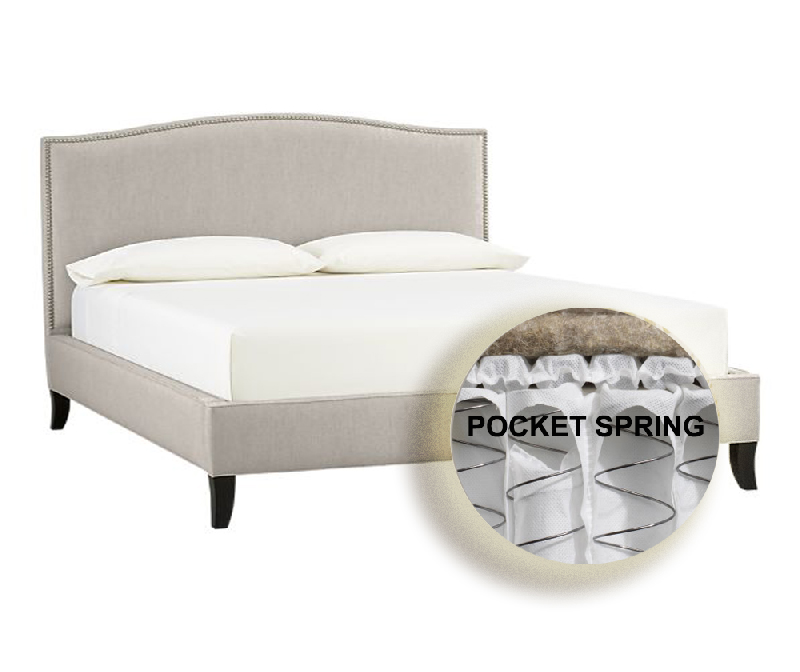
Coir:
It is a natural fiber used to make economical mattresses in India. They provide adequate ventilation thereby keeping the body cool.
Rubberized Coir - combines natural coir and natural rubber to create a mattress that is relatively cool due to its airy design. Coir is a naturally hygroscopic material which absorbs and retains about 8 to 10% moisture from the air. This gives the mattress a cool sensation. Some manufactures pad the rubberized coir with thick foams .
Polyurethane Foam (PU):
A synthetic, petroleum based foam with performance and price varying according to density and quality. Low cost and improved cushioning over other materials make this a popular choice for mattresses. The closely-walled beehive structure of the foam lets it compress and decompress to deliver adequate cushioning and softness.

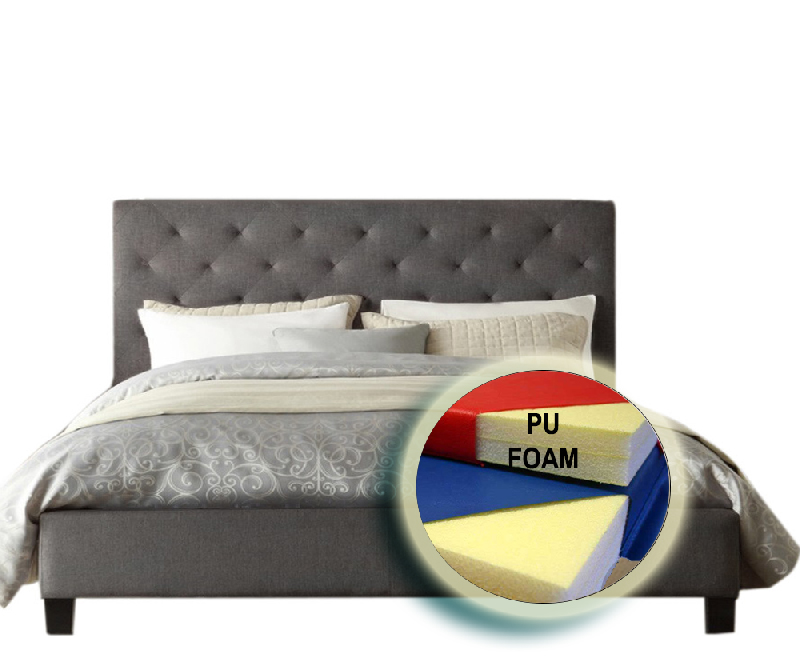
Bonded Foam:
Bonded foam is termed as regenerated material which means that it is processed and made by undergoing a re-compression process where different kind of PU material are sticked together under pressure.
High Resilience (HR) Foam:
This type of foam provides improved support, comfort, bounce and resilience when compared to Viscoelastic foams. They generally have higher densities and can be a bit more expensive.
Latex Foam:
The naturally hypoallergenic latex foam generally feels firmer than spring or foam mattresses. There are 3 main types: all natural latex, synthetic latex and a blend of natural and synthetic latex. These mattresses are also known to retain less heat, thereby keeping it cool. Aerated latex foams use large integrated air pockets designed into the foam to further improve cooling.
Mattress Tops
Normal Top:
Normal Top has the standard flat, woven finish with no additional padded layer.
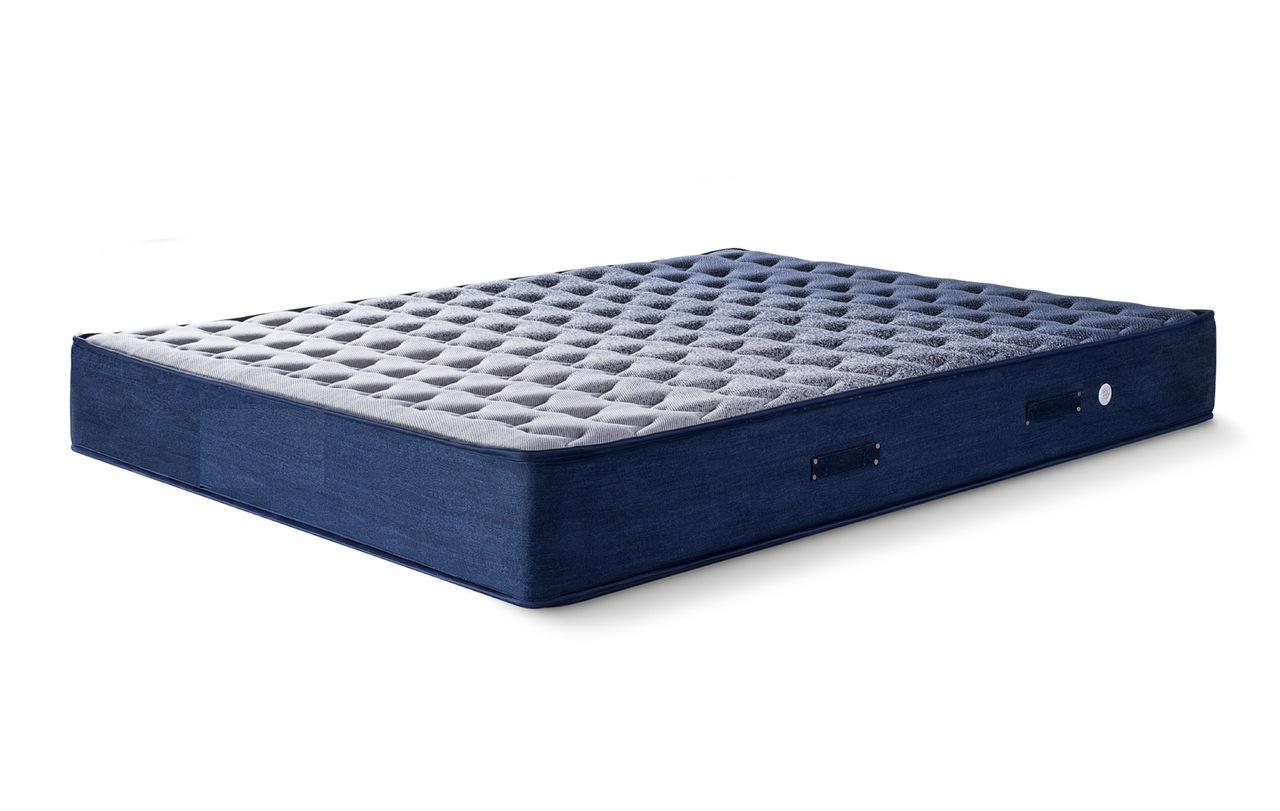
Pillow Top :
A plush pillow-like extra layer that is added on top of the normal top to increase softness and cushioning. This is generally not attached to the mattress and can be removed if needed.
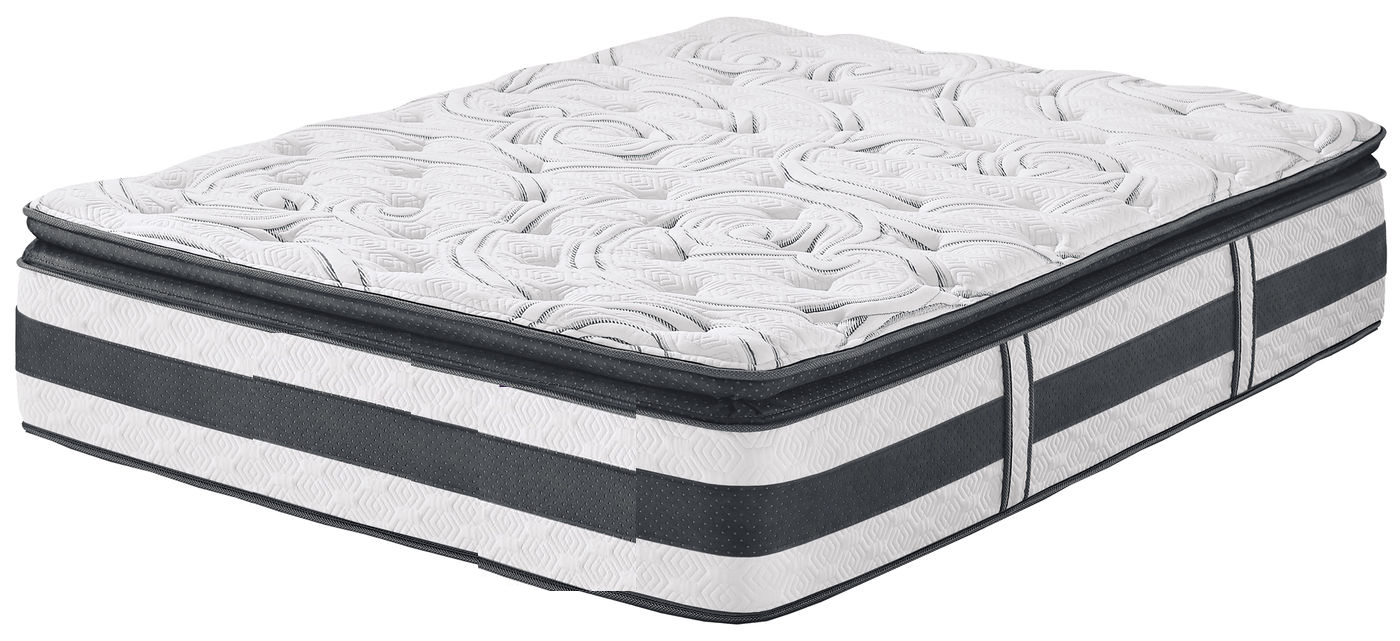
Euro Top :
Euro Top has a pillow top layer that is connected to the edges of the mattress.
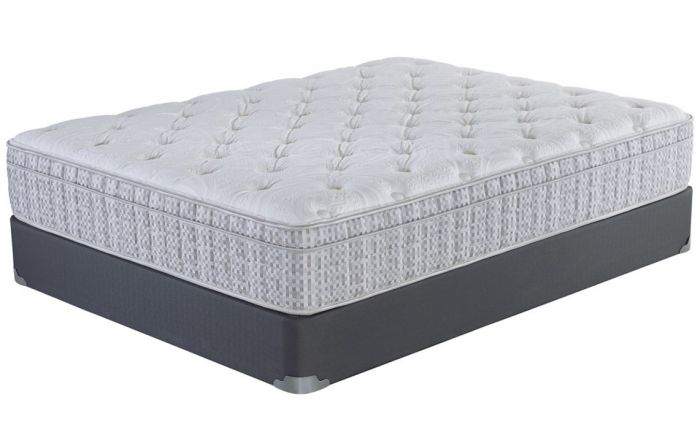
Mattress for Different Sleeping Positions

Back sleepers:
Back sleepers need a medium comfort layer – just enough to fill in the gap at the small of your back.

Side sleepers:
Side sleepers need the thickest comfort layer – enough to provide pressure point relief when you’re in your deepest sleeping position

Stomach sleepers:
Stomach sleepers need the thinnest comfort layer – just enough to provide support for your bony parts without allowing your pelvis to sink down too far.
Mattress features
Reversible mattress:
Flippable as both sides can be used with the middle layer providing the support. Reversing these mattresses helps them last longer and maintain a high level of comfort year after year.

Orthopedic support:
- Adapts perfectly to the body, helping relieve or soothe body pain such as joint or back aches.
- Specially designed pressure-relieving structure keeps body comfortable in all reclining positions.
- Shoulder and lumbar support that adapts to the body.
- The natural S-shape of the spine when sleeping to the side sinks naturally into the mattress.

The Unique Construction of Orthopaedic Mattresses:
Each orthopaedic mattress offers different benefits and varied levels of support, so you can be sure to find the one that is perfect for your body. There are several variations of orthopaedic mattresses, including:
- Latex and Memory foam- with innovative, advanced technology, these materials are known for their ability to mould around the body and then spring back to their original shapes. This eases any strain placed on pressure points for a more comfortable sleep, and will also prevent sleep-related aches and pains when you wake up.
- Air/ water beds- similar to Memory Foam, these will sink in at points of weight and then smoothing out when the weight is removed.
- Specialised spring constructions- these are intended to add additional support compared to the traditional inexpensive spring mattress.
Removable Cover:
These removable covers help protect your mattress from dirt, dust, sweat, etc., thereby keeping it hygienic. They are also easy to clean and use.:

Zero Partner Disturbance:
These mattresses offer individual support and improved comfort to minimize tossing and turning. They also eliminate movement across the bed as the springs aren’t linked together.

Tips For Better Sleep:
- If you often have trouble falling asleep, your bedroom may be too bright. Use thick curtains to keep the light out and get 7 - 8 hours of uninterrupted sleep.
- A room that’s too warm or too cold can also interfere with sleep. Experts say that snuggling into cool sheets helps trigger the sleep switch in your brain. While 18 - 22 ºC is considered ideal, find what works best for you.
- The right pillow can go a long way in eliminating twisting and turning in bed at night. Find the perfect pillow to complement your preferred sleeping posture.
- Set an alarm to go to sleep. Research shows that going to bed every night at the same time (weekends included) helps you rest better.
Mattress Care
Your mattress is an investment that you make for better sleep — and better physical and mental health. You want it to last. Depending on the type of mattress that you cozy up to every night, the rules of caring for it may have changed. Maximize your bed’s life with the following tips.
Rotate It
For a brand new set, avoid lumps and bumps by rotating it end to end every two weeks for the first four months, and then every three months after that. And don’t forget your box spring! That should also be rotated (but not flipped) every six months. If you’re unsure, it’s never a bad idea to check your warranty or ask a manager at the store where you bought it.
Spread the Love
You may have a favorite seat at the table, a favorite spot on the couch, and even a designated side of the bed. But when it comes to sitting on the edge of your bed to get dressed or tie your shoes, sitting in the same spot every time can cause your mattress to lose its structure prematurely.
Don’t Monkey Around
Jumping on the bed may sound like fun, but whatever your age, it’s better to do your jumping elsewhere. Not only is it dangerous, but it can damage the coils and/or the fibers of your mattress.
One-up Your Sheets
While a fitted sheet can help to protect the mattress, you’ll keep it even safer from dirt — and stains — if you first cover it with a waterproof, washable mattress cover. Beyond that, some mattress covers provide extra padding for comfort, as well as protection from allergens and bedbugs.
Keep It Clean — and Dry
You might not think of taking a vacuum to your mattress, but you should. Regularly giving it a clean sweep helps to keep dust from becoming ground into the mattress. Spilled something? You can dab at it with warm soapy water, but avoid getting it any more wet than you have to since moisture creates a breeding ground for mold. Then, let it dry completely before making the bed.
Use Baking Soda to Nix Smells
Got something stinky going on? Try this to absorb odors without harming your mattress: Sprinkle it with baking soda and wait 20 minutes. Then use a vacuum to suck up the baking soda, and enjoy a fresher night’s rest.
Carry It Carefully
Your mattress may have straps on the side, but they’re actually not made for carrying it. Use those straps instead for help positioning your mattress (like when you rotate it). If you need to lift it completely, do so from underneath, and make sure to get several strong people to work together, lifting with their legs. And while you’re at it, ever see a car or truck with a mattress strapped to the top? Not a good idea. Instead, only transport your mattress when it’s fully supported.
Give It A Regular Check-up
Your mattress is only as good as the foundation that it’s placed on — ideally a good-quality frame that you purchased at the same time as your mattress. Keep it up by checking the legs and castors every six months to see if they need to be tightened.
Trade The Mattress In
Even with the best care, your mattress will eventually wear out, usually after eight to 10 years. It may show wear (like coils poking through or saggy edges) or it may not (kind of like a pair of sneakers that you wear only on the treadmill). But if you find that you’re waking up with an achy back or it’s simply not feeling as comfortable, it may be time to go shopping.
